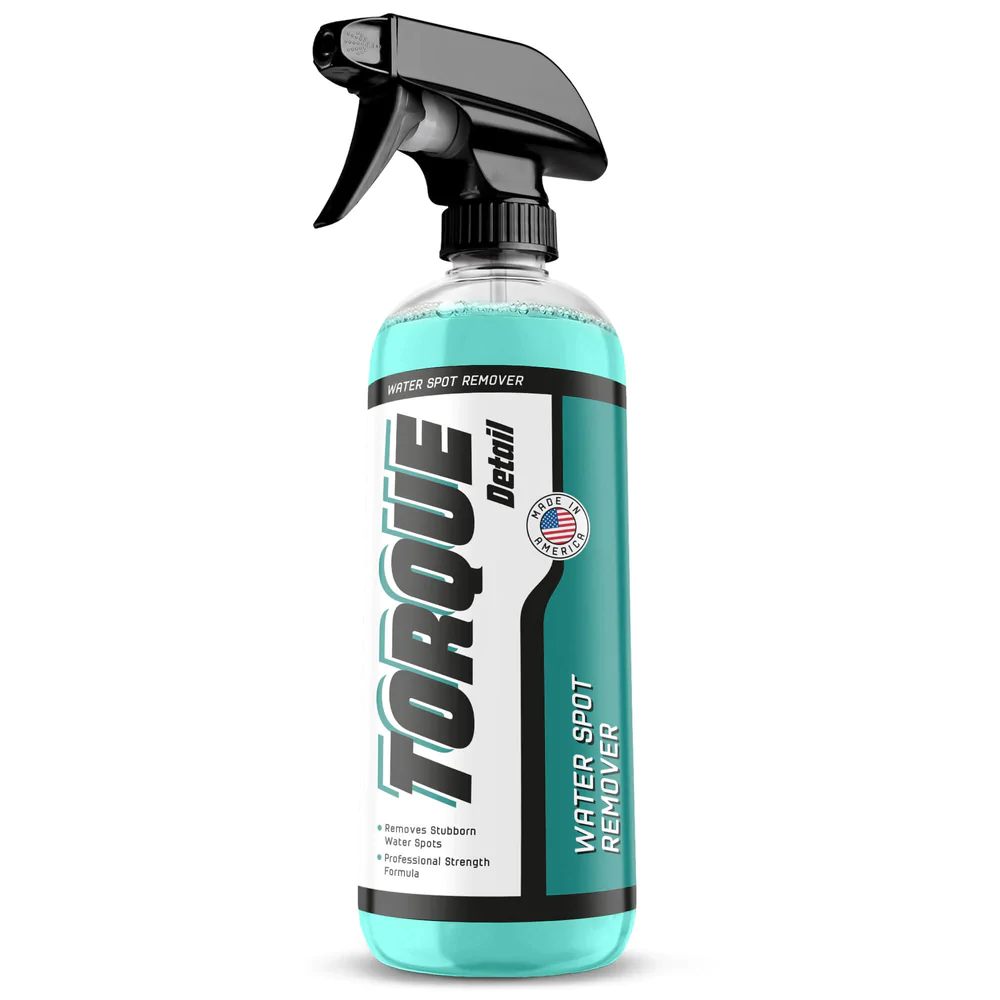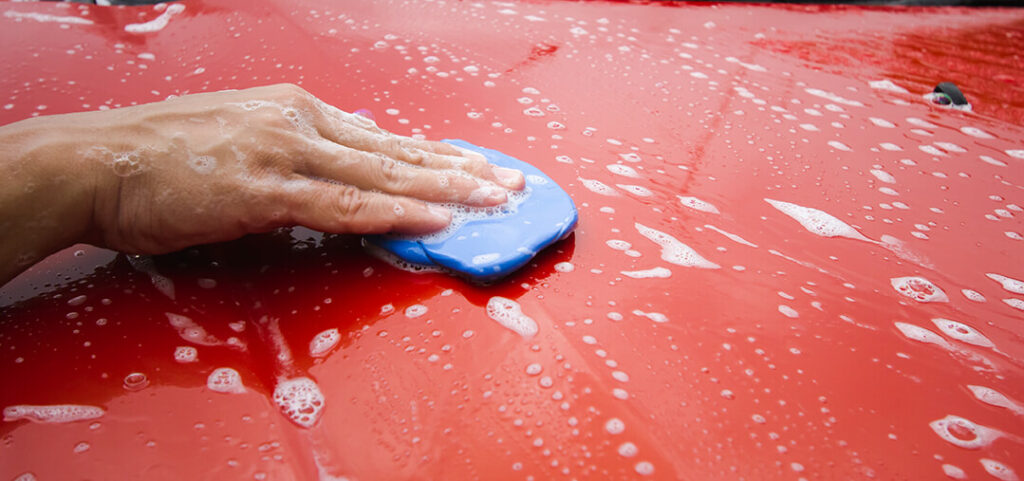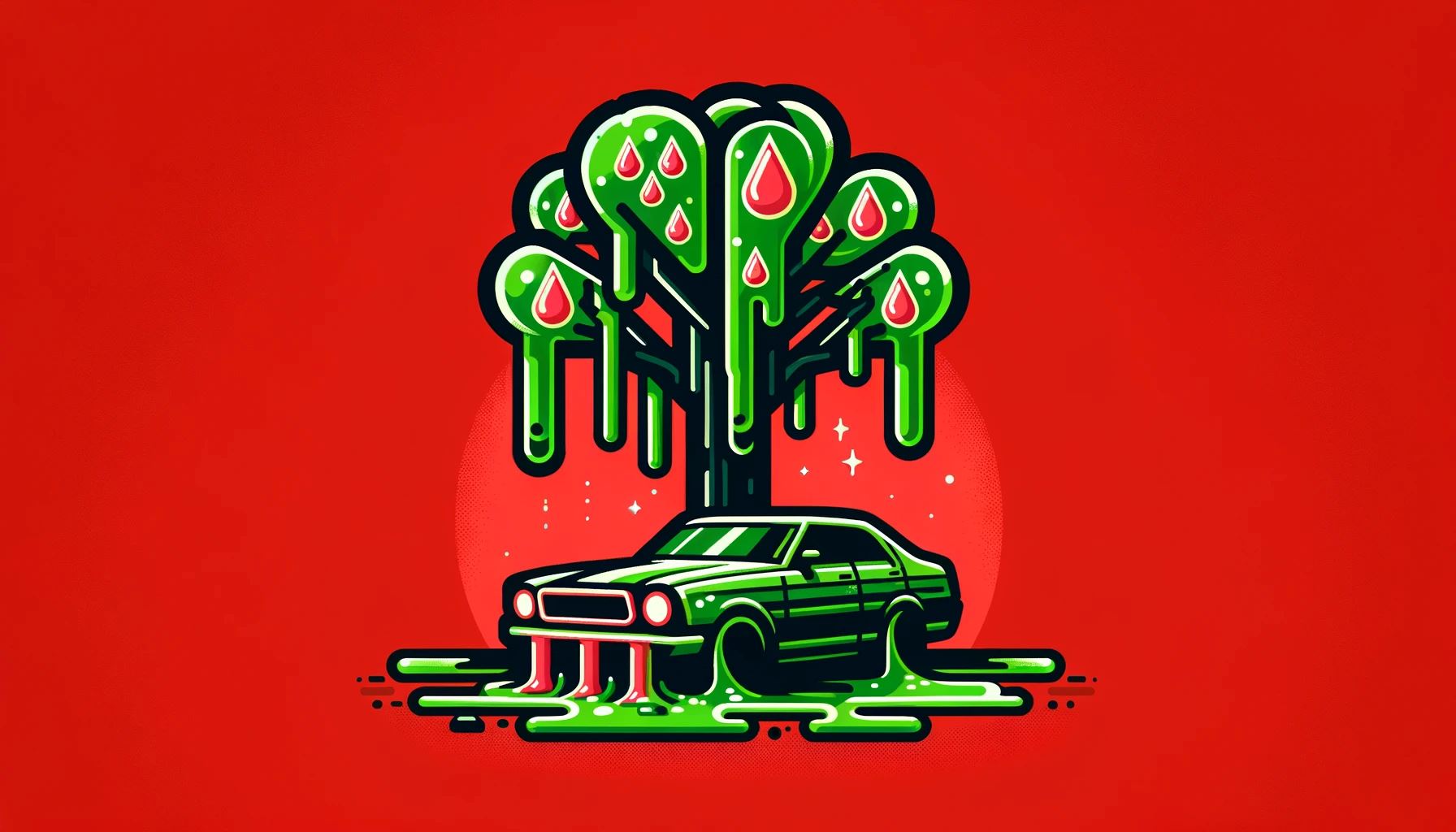Water spots. They appear out of nowhere and are tricky to get rid of when you find them. However, with a little knowledge, it isn’t impossible to get your glass to be clear and streak free again.
In this guide, we’ll go over just how to get rid of these spots once and for all!
★★★★★
Works on Paint, Glass & Rims
Featuring a carefully formulated acid based formula, our Water Spot Remover gets rid of stubborn calcium, mineral and fluoride deposits that cause hard water spots. The acid quickly breaks down the contaminants and allows for easy removal.
What Causes Water Spots on Glass

Basically, water spots are made when water with a lot of minerals, commonly called hard water, ends up drying on glass rather than being wiped away. As the water evaporates, minerals stay behind. This leaves behind the water spots you see.
Rainwater can create water spots, but it’s more common to see them if a sprinkler is spraying on glass or if the glass isn’t properly dried after washing. Snow that melts on the glass and any other source of pooling water can also leave behind water spots as it dries.
Removing Water Spots from Glass
Water spots can be stubborn.
They don’t always come off with normal cleaning, and leave a streaky residue on your car. But there are some ways to get rid of them!
Many solutions for removing water spots are things you have on hand and are often non-toxic. Just remember to test your chosen cleaning solution on a small, inconspicuous area to ensure it won’t damage the glass.

#1 Recommendation: Torque Detail Water Spot Remover

Torque Detail Water Spot Remover is a powerful cleaner for quickly and effectively removing water spots from glass surfaces.
It is an easy and effective way to safely remove water spots from your vehicle’s surface. Before applying, it is important to carefully read ALL instructions and not apply the product to a hot surface.
After washing with soap, rinsing, and towel drying the affected area, spray the remover onto a clean microfiber towel and gently rub it onto the surface for 30 seconds max. Be sure to neutralize the remover with water, soap, or a waterless wash afterward, or repeat multiple applications if necessary.
For extra protection against future contamination, consider applying a wax coating over your clean surface to stop spots from forming.
Vinegar and Water

Vinegar’s acidic nature makes it very effective against hard water spots and mineral build-up. However, it needs to be diluted before using it on the glass to prevent damage to the surface.
To use vinegar to remove water spots, mix it with equal parts water and spray it on the spots, thoroughly soaking the areas with the worst build-up of water spots.
Let the solution sit for a few minutes, spraying any areas that begin to dry. Then, take a rough towel wetted with the vinegar solution and gently scrub the water spots. Next, dry the window with a soft cloth and repeat the process for any remaining stubborn spots.
Lemon
Similar to vinegar, the acidity of lemons is great for taking care of water spots. T
There are a couple of different ways you can use lemon. One way is to cut the lemon in half and rub it on the water spots with some pressure. Then clean off the lemon juice with a soft cloth, spray some glass cleaner on it, and wipe it away with another soft cloth.
The other way to use lemons is to squeeze the juice into a spray bottle with hot water in a 1:2 dilution, then spray it on the water spots. Let it sit for at least 10 minutes and up to 30 minutes for more stubborn spots. After it’s sat, gently scrub the spots to remove the hard water build-up and wash or wipe the lemon mixture off.
Baking Soda and Water
Baking soda’s abrasive nature makes it perfect for getting rid of all kinds of grime, including water spots.
Simply mix it with some water until it forms a paste, then apply it to a cloth and carefully scrub the water spots. You want to apply enough pressure to remove the water spot but not enough to scratch the glass. Then rinse it off and use a glass cleaner and soft cloth to remove any residue.
Newspaper
Newspaper is an innocuous, non-abrasive material with a surprising number of uses.
Simply rub it on the water spots, wet or dry. The newspaper can absorb the mineral residues that cause water spots, which lets you easily scrub them away without a fuss.
Especially when wet, newspaper doesn’t leave behind any scratches. It’s also very absorbent, and you can use it to completely dry glass, preventing new water spots from forming.
Magic Erasers

Magic erasers, also known as melamine sponges, are powerful, multi-purpose cleaning tools for all areas of the house.
They’re particularly useful for getting water spots off of the glass.
Just get them wet and scrub the water spots off. Ensure you dry the glass thoroughly to prevent new water spots from forming. If you’ve got other kinds of grime on your glass, magic erasers can also clean that off.
★★★★★
Works on Paint, Glass & Rims
Featuring a carefully formulated acid based formula, our Water Spot Remover gets rid of stubborn calcium, mineral and fluoride deposits that cause hard water spots. The acid quickly breaks down the contaminants and allows for easy removal.
Limescale Removers
Limescale removers are specifically designed to address the mineral residues that create water spots.
As a result, they’re powerful products well suited to removing stubborn water spots. Just use caution if the limescale remover has an abrasive to prevent replacing the water spots with scratches.
To use a limescale remover, pour some on a sponge, wipe it on the water spots, and scrub them with a toothbrush. Then wash it off and dry the glass well once you’re done. These products tend to work quickly, making them great for removing water spots when you’re short on time.
Also, try to work in a well-ventilated area. These chemicals may have a strong odor or cause respiratory issues if inhaled.
Window Cleaners
Window cleaners are made to leave glass clean, shiny, and streak-free. They can eliminate all kinds of dirt and grime, including hard water spots, fingerprints, and insect marks. Every window cleaner is a little different, so you need to read and follow the specific instructions to be sure you use it appropriately.
These cleaners are made from synthetic chemicals, although natural options are available. Each type has its benefits and drawbacks. The important thing to know, though, is to look for one that is labeled for removing water spots.
WD-40
Though not commonly used for household cleaning, an uncommon method of removing water spots from glass is to use WD-40.
Best known for its ability to remove rust and loosen stiff locks, WD-40 has over 2,000 uses, including removing hard water spots. It works by loosening up mineral deposits, making spots easy to wipe away.
To use WD-40 to remove water spots, simply spray it on the water spots, then wipe them away. If there’s any residue left behind, follow it up with a glass cleaner and a soft microfiber towel. You can use any variety of WD-40, including the low-odor variety for confined spaces.
Preventing Water Spots on Glass

While there are plenty of options for removing water spots from glass, it’s much easier to prevent them from forming in the first place.
The main driver behind water spots is hard water. To stop water spots in their tracks, it’s best to use a water softener. Water softeners remove minerals from water- meaning it’ll reduce how many minerals are left behind as the water evaporates.
★★★★★
Works on Paint, Glass & Rims
Featuring a carefully formulated acid based formula, our Water Spot Remover gets rid of stubborn calcium, mineral and fluoride deposits that cause hard water spots. The acid quickly breaks down the contaminants and allows for easy removal.
Unfortunately, this isn’t possible every day or in every situation. In these instances, the best prevention is thoroughly drying glass to ensure no water evaporates.
Microfiber, chamois cloths, and newspapers are great options to get all the water off glass. Ensure you use a dry cloth or newspaper and swap it out for a fresh one whenever it gets wet!
Additionally, during the winter, you’ll want to take extra precautions to avoid water spots.
If water spots do still form even with this, don’t be alarmed! You can easily fix this with our water spot remover.









